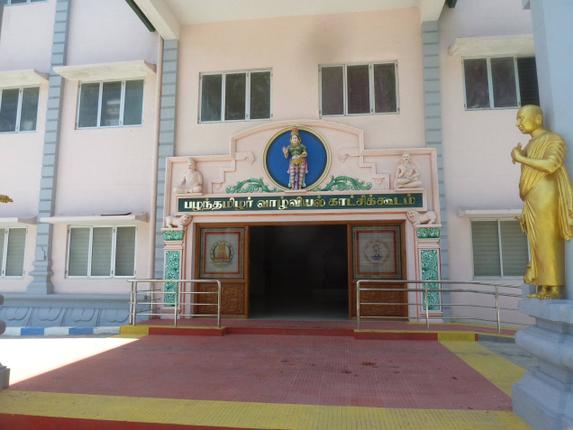
GEETA PADMANABHAN takes a walk through the International Institute of Tamil Studies, Taramani, and returns with stories of valour and artistry
Did you know the ancient Tamils could weave cloth so fine that yards could be packed in a matchbox? That they compared pinpoint surgery to a bird picking fish from deep waters? Painted planets on the ceilings of bedrooms?
These and other facts come alive in a comprehensive display at the International Institute of Tamil Studies, Taramani. One visit there, and you’re sure to feel great pride.
More so, when you realise that they were so perfect, we still follow their designs.
Genesis
The Institute was started in 1970 for Tamil research. Students and academicians stepped in for study and discussion. In 2014, directors Vijayaraghavan and Manavazhagan (present officer-in-charge) submitted a proposal to the Government for a cultural centre, where a permanent exhibition would recreate the 5,000-year-old history of Tamils. The exhibits would retell legends culled from decades of research.
The approval was announced in September 2014. A new building came up, and several teams set to work. They gathered material, shaped models and ordered paintings. In March this year, the centre opened to the public.
The attractions
At the centre, you’ll first be led to a spiffy, modern theatre with excellent acoustics for a treat of short films (eight to nine minutes each) put together with photographs, dramatic recreations, videos, film clippings and pictures of sculptures/murals from temples.
One is on the evolution of Tamils as a settled group, their inventions to make life comfortable, their superior talent in weaving, growing crops and trade, and the formation of family units.
The others are about ancient Tamil medicine, water management, war craft and administration. Clear narration threads the stories seamlessly.
Rich sources
“Sangam literary works spanned 5,000 years. For my doctorate, I researched on the life of Tamils during that period. In many ways, that became the basis for what we have created here,” says Dr. Manavazhagan. The information found in literature has been corroborated for authenticity by archaeological findings, living structures, palm-leaf manuscripts and copper plates that have survived the centuries. If Kallanai teaches us water management, the Tanjore temple is a fine example of architectural ability, and the lighthouse stands for ancient Tamils’ prowess in ocean navigation.
Celebrates literature
“This museum is based entirely on literature,” says Dr. Manavazhagan. The idea was to gather in one place tangible evidence of the achievements of Tamils in various fields.
It would reveal to the world the culture that nurtured ideas, patronised art, war craft and scientific temper, and promoted progressive norms as a way of life.
“We want our youth and foreigners to be introduced to that advanced civilisation,” he says.
What’s on display
The undeniably rich life of the Tamils is narrated through paintings based on Sangam literature, wood and cement reproductions of artefacts found in various parts of the State, photographs of collections in other museums, replicas of weapons and implements, dioramic representations and models of old cities and temples — many of them accompanied by literary evidence.
The galleries
The exhibits have been arranged in five well-lit, well-arranged galleries — Tholkappiar Arangam displays art forms (the door is the highlight); Thiruvalluvar is about metalcraft/agriculture, education, medicine and weapons; Kapilar has a collection of home tools/grinders, exhibits on temples and gods; Avvaiyar Arangam has life-like depictions of famous events in the life of kings; and the Ilango Adigal gallery touches on ship-building and sail-weaving — for which Tamils were well-known. The highlight in this gallery is a beautiful mini lighthouse.
Dioramas tell us how kings stuck to the rules of war, treated subjects with justice, and ensured fair-play and compassion to all creatures. The scale-models of Madurai and Srirangam reveal the meticulous city-planning and extraordinary temple-building artistry.
Call 2254 2992 for a trip back in time.
source: http://www.thehindu.com / The Hindu / Home> Features> MetroPlus / Geeta Padmanabhan / Chennai – May 31st, 2016